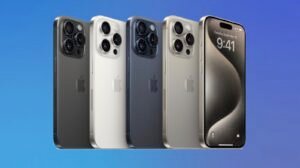Google’s foray into the laptop market has been, to put it mildly, a mixed bag. While Chromebooks have found success in the education sector, their Pixelbook line has struggled to gain mainstream traction. Despite some genuinely innovative features and sleek designs, Pixelbooks haven’t quite hit the mark. So, what’s missing? What could Google do differently to finally create a laptop that captures the hearts and wallets of consumers?
This isn’t just about throwing in the latest processor or shaving off a few millimeters of thickness. It’s about understanding the nuances of the laptop market, addressing the shortcomings of previous Pixelbooks, and leveraging Google’s unique strengths to deliver a truly compelling product. Let’s dive into what Google needs to consider:
-
Competitive Pricing: Finding the Sweet Spot
- The Problem: Previous Pixelbooks were often priced at a premium, putting them in direct competition with established players like Apple and Dell offering more powerful hardware configurations.
- The Solution: Google needs to find a competitive price point, especially for its flagship models. Offering different configurations with varying specs and price points could attract a wider range of buyers.
-
Software Optimization: A Seamless Experience
- The Problem: While Chrome OS has matured significantly, some users find it limiting compared to Windows or macOS. Android app compatibility, while improved, still has its quirks.
- The Solution: Google needs to double down on software optimization. This means ensuring flawless Android app integration, further expanding Linux app support, and continuing to refine the Chrome OS user experience.
-
Hardware Refinement: The Devil is in the Details
- The Problem: Some Pixelbooks have faced criticism for keyboard quality, trackpad responsiveness, and port selection.
- The Solution: Google needs to sweat the small stuff. This includes:
- Best-in-class keyboard and trackpad: These are essential for a premium laptop experience.
- A comprehensive selection of ports: Including USB-A, HDMI, and an SD card slot would cater to a wider range of users.
- Improved battery life: Pushing for all-day battery life is crucial in today’s mobile world.
-
Marketing and Brand Positioning: Telling the Right Story
- The Problem: Google’s marketing for Pixelbooks has been somewhat subdued. The message about what makes Pixelbooks unique hasn’t always been clear.
- The Solution: Google needs to clearly communicate the value proposition of its laptops. This includes highlighting the strengths of Chrome OS, such as its speed, security, and simplicity, while also showcasing unique features like Google Assistant integration and AI-powered capabilities.
-
Expanding the Ecosystem: The Power of Synergy
- The Problem: While Google offers a suite of services, the integration with Pixelbooks could be deeper.
- The Solution: Google should further integrate its ecosystem into Pixelbooks. This could include:
- Enhanced synergy with Android phones: Seamless file sharing, call and message continuity, and instant tethering.
- Tighter integration with Google services: Leveraging Google Assistant for productivity tasks, using Google Photos for seamless photo management, and optimizing Google Drive for offline access.
My Personal Experience: A Chromebook Convert
I’ve been using a Chromebook as my primary laptop for the past three years. Initially, I was skeptical, but the speed, simplicity, and security of Chrome OS won me over. However, I’ve also experienced the limitations. There have been times when I needed a specific application that wasn’t available or when Android app compatibility was an issue.
This is where Google has the opportunity to truly shine. By addressing these pain points and leveraging its strengths in AI, software, and ecosystem integration, Google can create a laptop that’s not just good, but truly exceptional.
Beyond the Basics: Google’s Unique Advantages
Google has a few aces up its sleeve that could give it an edge in the laptop market:
- AI Integration: Google is a leader in artificial intelligence. Imagine a Pixelbook with advanced AI capabilities for tasks like real-time transcription, language translation, and personalized learning.
- Software Innovation: Google has a track record of developing innovative software. This could translate into unique features for Pixelbooks, such as advanced note-taking apps, AI-powered photo and video editing tools, and seamless cloud integration.
- Security: Chrome OS is known for its robust security features. Google could further enhance this by incorporating advanced security measures like hardware-based encryption and biometric authentication.
The Future of Pixelbooks: A Winning Formula?
Google has all the ingredients to create a winning laptop. By focusing on competitive pricing, software optimization, hardware refinement, marketing, and ecosystem integration, Google can finally crack the code. The potential is there, and it’s exciting to imagine what a truly innovative and powerful Pixelbook could achieve.



















Add Comment